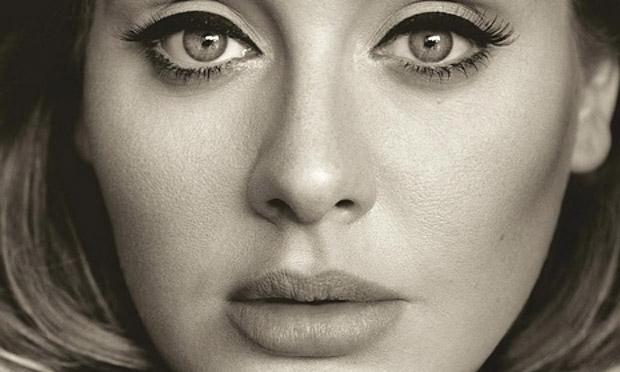I never thought I’d be the one in the family begging to turn on the all-Christmas-all-the-time radio station—in our case, Wish 99.7, Pittsburgh’s official Christmas station—especially not the day before Advent. But this year I was the first to tune in. How else to get Adele turned off?
The several previous days of Thanksgiving food preparation, with my wife spending so many hours in the kitchen, found the plaintive melodies of Adele escaping the kitchen into every corner of the house every minute of the day.
I can see clearly in my mind my six-year-old daughter, Mary Clare, on the eve of Thanksgiving, drunk on sleeplessness, standing in the kitchen on her stool—she’s wearing her turquoise pajamas and matching earmuffs—ladling pumpkin pie filling into pie shells and belting, you guessed it, “Hello.” I hope our insurance covers visits to the otolaryngologist.
With all the hype, one could be forgiven for thinking that the advent we’d been waiting for was the arrival of Adele’s new album.
The other night when I was washing dishes, someone beat me to the music selection—“Hello,” again. But this time I listened to the words, and as I listened, I thought, “This actually isn’t so bad for Advent.” Having these deep thoughts is one of the hazards of being the nightly dishwasher.
In earlier albums, if I remember correctly, Adele is glad to be rid of the guy or guys in her life (I don’t know if they’re all the same guy, and, as we professors say, you can’t trust Wikipedia). I used to say, “I’d hate to be the guy she’s singing about.” But “Hello” is different. To use a theologically-charged word, it expresses longing for reconciliation.
She’s calling from the “other side,” and this isn’t the first time. She’s sorry for “breaking your heart.” But he won’t answer, at least not in the six minutes it takes to finish the song. She wistfully recollects an earlier time in their relationship before some kind of fall (another theologically-laden word).
Here we have a ruptured, unhealed relationship. And the song is not optimistic; there’s nothing she can do to fix things. After a thousand times pressing “ignore” on his phone, what’s the chance he’s going to answer next time?
Maybe I started having these luminous thoughts because in a recent chapel service at Pittsburgh Theological Seminary we’d sung all seven verses of “O, Come, O Come, Emmanuel”—it took only slightly longer than “Hello”—and the last verse was still on my mind: “O come, Desire of nations, bind all peoples in one heart and mind; bid envy, strife, and discord cease; fill the whole world with heaven’s peace.”
A verse about longing for the healing of ruptured relationships. Had Adele found an inspiration in the Advent musical canon?
The ruptures are many and deep: within families and relationships; between Fox News devotees and MSNBC watchers; between nation states, among races, within cultures. If this were a sermon, the list would go on. Who of us doesn’t know something of these breakdowns and something of the longing for their healing?
And not least the healing of the rupture between God and humanity.
What we await in Advent is the full healing, God’s restoration of all things, that time when “mourning and crying and pain will be no more” (Rev. 21:4). We long for it even knowing it will put out of business all the Adeles who sing songs about the brokenness.
On balance, I think we’ll be able to deal with that, don’t you?
So, well into Advent, I’ve heard “Santa Baby” six times, three different versions a day of “Frosty the Snow Man”, 20 of the several hundred arrangements of “Sleigh Ride”—I think it might be time to turn Adele back on, even at the risk of missing “I Want a Hippopotamus for Christmas,” my seasonal favorite. Who knows? I might have another deep thought.
Mary Clare, get your earmuffs. It’s time to sing.
The Rev. Dr. L. Roger Owens is associate professor of leadership and ministry at Pittsburgh Theological Seminary and teaches courses in the MDiv, Doctor of Ministry, and Continuing Education programs. Before coming to PTS he served urban and rural churches for eight years in North Carolina as co-pastor with his wife Ginger. He has written multiple books including The Shape of Participation: A Theology of Church Practices which was called “this decades best work in ecclesiology” by The Christian Century.

